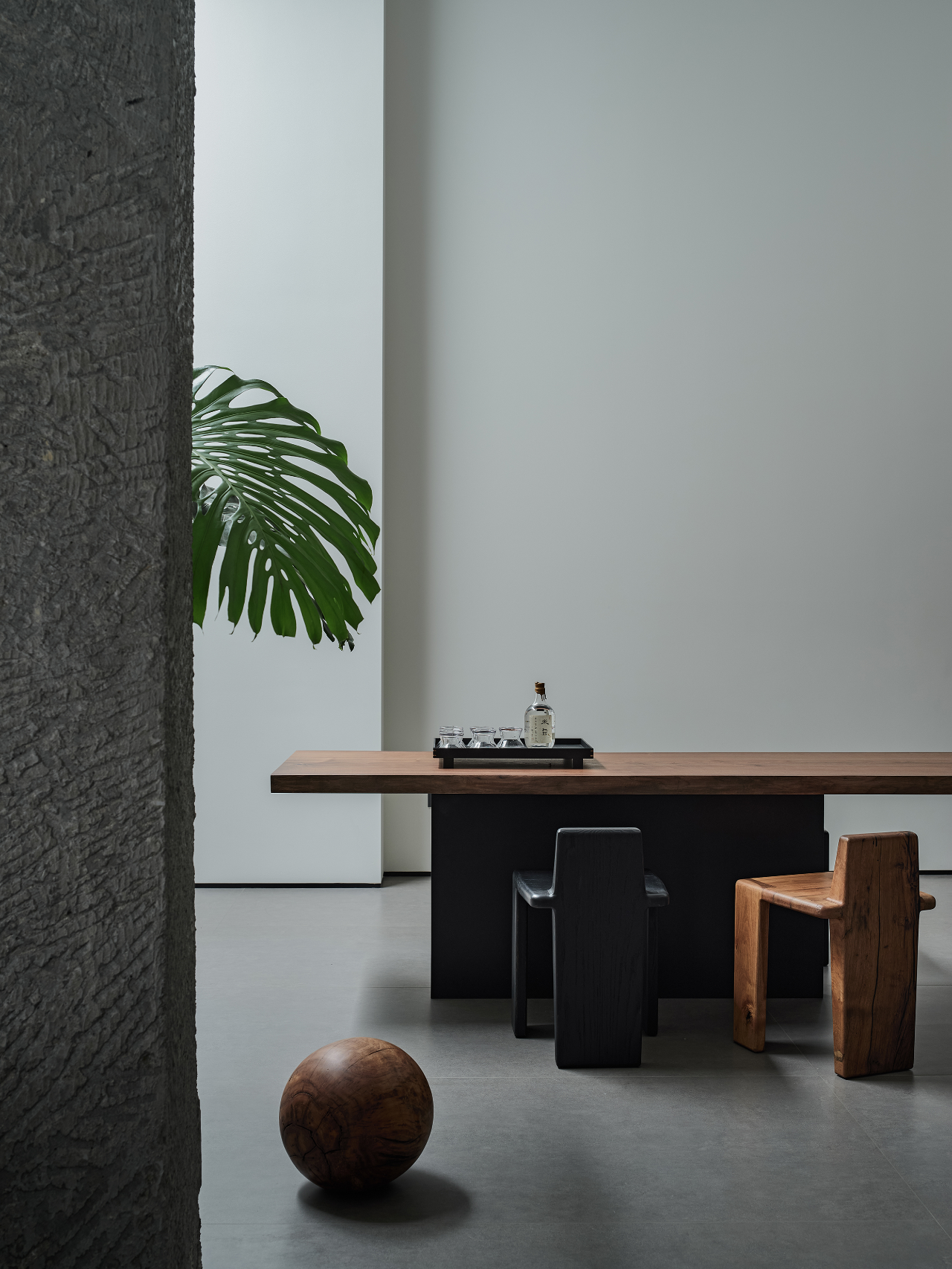Cloud Tower the next ENTERprise Architects ZT GmbH
2018-08-20 02:00
架构师提供的文本描述。2005年5月,西西特的下一家企业和景观设计师兰德赢得了历史公园当代结构调整和露天展馆的竞争。这个展馆被认为是一个地标,是公园的吸引者,也是夏季音乐节期间古典音乐的杰出表演空间。
Text description provided by the architects. In May 2005 the next ENTERprise and the landscape architects Land in Sicht won the competition for a contemporary restructuring of the historical park and for an open-air pavilion. The pavilion was conceived as a landmark, as an attractor to the park but also as an outstanding performance space for classical music during festival season in summer.
从概念上说,展馆是基于一个不受任何特定目的约束的人物的想法,而只是在表演期间才被视为一个舞台。这样一个自由的结构怎么能作为一种声学的乐器,能够集中声音能量并引导它到1700个座位上,以获得理想的音乐体验?
Conceptually the pavilion is based on the idea of a figure that is not bound by any particular purpose and is perceived as a stage only during performances. How can such a free structure serve as an acoustical instrument, able to focus sound energy and direct it to 1700 seats for an ideal music experience?
作为一个空间图形,展馆是由景观要素-凹陷、斜坡、切口、山丘-以及屋顶的建筑折叠而产生的。
As a spatial figure the pavilion is generated from elements of the landscape – the depression, the slope, the incision, the hillock – and the architectural folding of the roof.
所需的"Schneise"(松散翻译:景观中的一个切口)创造了一个将乘车学校与学校联系在一起的Vista"黑门"并且用作穿过礼堂区域的入口和通道。景观和空间序列的分期、景点的取景和隐藏通常是通过传统园林中的曲折布局来实现的,是通过改变切口的高度来实现这些效果而得到的一个主题。
The 'Schneise' (loosely translated: an incision in the landscape) creates a vista linking the riding school to the 'Black Gate’ and serves as an entrance to and a passage through the auditorium area. The staging of views and spatial sequences, the framing and hiding of points of attraction, often achieved by the meandering layout of paths in the traditional landscape garden, is a theme taken up by varying the elevation of the incision to achieve these effects.
游客从正门出来,被舞台屋顶的轮廓所吸引,在一个人造土堆后面可以看到。他沉浸在切口中,穿过小山,穿过这个又深又窄的空间,进入了大礼堂和舞台的宽阔竞技场,舞台上的屋顶悬挂在上面。
Coming from the main entrance, the visitor is enticed to proceed by the silhouette of the stage roof, visible behind an artificial mound. Immersing himself into the incision, he tunnels through the hill and – after passing this deep and narrow space – enters the wide arena of the auditorium and the stage, the stage roof suspended above it.
展馆被插入到入口门,骑马学校,城堡,‘黑门’和‘Gro e Senke’(照明)的现有关系领域。大萧条),并在此过程中重新设定景观的景观网络。通过它的地形结构,它重新解释了景观花园的正式元素-有视角和视觉关系的戏剧,有收缩和扩展的,有封闭的和开放的。
The pavilion is inserted into the existing relational field of entrance gate, riding school, castle, 'Black Gate' and the 'Große Senke' (lit. transl.: large depression) and in the process re-contextualizes the network of views in the landscape. Through its topographical configuration it reinterprets formal elements of the landscape garden – the play with perspective and visual relations, with contraction and expansion, with enclosure and opening.
对于露天舞台来说,声学的基本规则是“你所看到的是你所听到的”,这是探索透视和声音空间之间的亲缘关系的一个线索。通过对地形的建模,强调了现有凹陷的地形-“Gro-e Senke”。人工小丘是通过进一步挖掘凹陷,并随后重新分配土壤在其周边,从而创造了礼堂层。与自然地形明显不同的是,它们的几何、舞台和礼堂仍然与场地的地形融为一体。
The basic rule of acoustics for open-air stages, 'what you see is what you hear' serves as a cue to explore affinities between perspective and acoustic space. The topography of the existing depression – the 'Große Senke' – was emphasized by modeling the terrain. Artificial hillocks are created by further excavating the depression and subsequently redistributing the soil at its perimeter, thus creating the auditorium tiers. Clearly distinguished from the natural terrain by their geometry, stage and auditorium nonetheless merge fluidly with the topography of the site.
从概念上讲,材料的选择是为了强调场地的露天特性,并加强建筑结构与景观之间的联系。舞台是一个整体结构的白面混凝土,钢和玻璃嵌入在一个围护小丘。观众层的设计使用预制混凝土元素,压实的砾石表面和草坪覆盖,几何精确的山丘。
Conceptually, materials were chosen to underscore the open-air character of the site and to strengthen the bond between built structure and landscape. The stage is a monolithic structure of fair-faced concrete, steel and glass embedded into an enveloping hillock. The audience tiers were designed using prefabricated concrete elements, compacted gravel surfaces and lawn-covered, geometrically precise hillocks.
舞台屋顶被设计成一个自主的,雕塑的物体。悬挂在与树冠的水平上的景观,它被放置在成群的树木中,就好像它又是一棵树一样。外面闪闪发亮的金属表面反射着天空和树木,把屋顶变成了云塔。
The stage roof is designed as an autonomous, sculptured object. Suspended above the landscape on a level with the tree canopies it is placed among the groups of trees as if it were one more of them. The shiny metal surface on the outside reflects the sky and the trees, turning the roof into a cloud-tower.
Architects the next ENTERprise Architects
Location Grafenegg 10, 3485 Grafenegg, Austria
Lead Architects tnE Architects ZT GmbH – harnoncourt | fuchs & partner
Photographs Lukas Schaller, Alexander Haiden
 举报
举报
别默默的看了,快登录帮我评论一下吧!:)
注册
登录
更多评论
相关文章
-

描边风设计中,最容易犯的8种问题分析
2018年走过了四分之一,LOGO设计趋势也清晰了LOGO设计
-

描边风设计中,最容易犯的8种问题分析
2018年走过了四分之一,LOGO设计趋势也清晰了LOGO设计
-

描边风设计中,最容易犯的8种问题分析
2018年走过了四分之一,LOGO设计趋势也清晰了LOGO设计
_philipp_horak_47.jpg)

_philipp_horak_08.jpg)

_philipp_horak.jpg)



_alexander_haiden.jpg)





.jpg)





.jpg)





_philipp_horak_47.jpg)

_philipp_horak_08.jpg)

_philipp_horak.jpg)

_alexander_haiden.jpg)







































